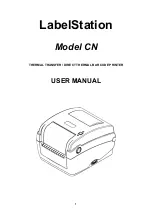
18
AFTER SALES SUPPORT
1300 886 649
AUS
MODEL: 104706 PRODUCT CODE: 51381 10/2015
Instructions (Cont.)
Flour
Flour is the main ingredient of bread. It releases gluten, which allows the
bread to rise, and gives substance to the bread. The characteristics of flour
are determined not only by the type but also by the conditions of grain
cultivation, processing method and storage.
Always check the packaging to see if the flour is suitable for baking bread.
The basic types of bread flour are obtained from wheat and rye, with wheat
flour being the more commonly used for baking bread and pastries. Also
make sure to always weigh the correct amount of flour required in your recipe
as the weight of flour can vary significantly from type to type.
NOTE:
Do not use self-raising flour unless stated in your recipe.
Bread flour:
Bread-making flour (refined) is made of the inner part of the
grain only and contains high gluten levels for optimum crumb elasticity and
rising ability.
Wholemeal (whole-wheat) flour:
To obtain wholemeal flour, whole wheat
grains are ground with their membrane, which produces a wholemeal flour
with enhanced nutritional value. It is often used mixed together with bread
flour as bread made from whole-wheat flour is usually smaller in size and has
a denser consistency.
Rye flour:
When using rye flour, take into account that this dough does not rise
much. For that reason, use at least 30% wheat flour and max. 70% rye flour.
Corn and oatmeal flour:
Corn and oatmeal flour can be mixed with wheat or
rye flour to improve the bread texture and add extra flavour.
Yeast
Yeast allows the dough to rise and makes the bread light and easy to digest.
Flour and sugar are a nutritional medium for yeast growth. You can either
use fresh, compressed yeast and dissolve it in warm liquid (water, milk, etc.),
or add fast-acting dry yeast to the flour in the machine (dry yeast does not
require prior activation in liquid).
We recommend using fast-acting dry yeast as this type has a longer shelf life
and tends to produce more consistent results than fresh yeast. But make sure
to check the use-by date, as stale yeast may prevent the rising process. For the
same reason, store fresh yeast in the refrigerator. Follow the recommendations
on the packaging or observe the following proportions: 1 teaspoon of yeast
powder is equal to 1.5 teaspoons of fresh, compressed yeast.
Basic bread-making ingredients
















































